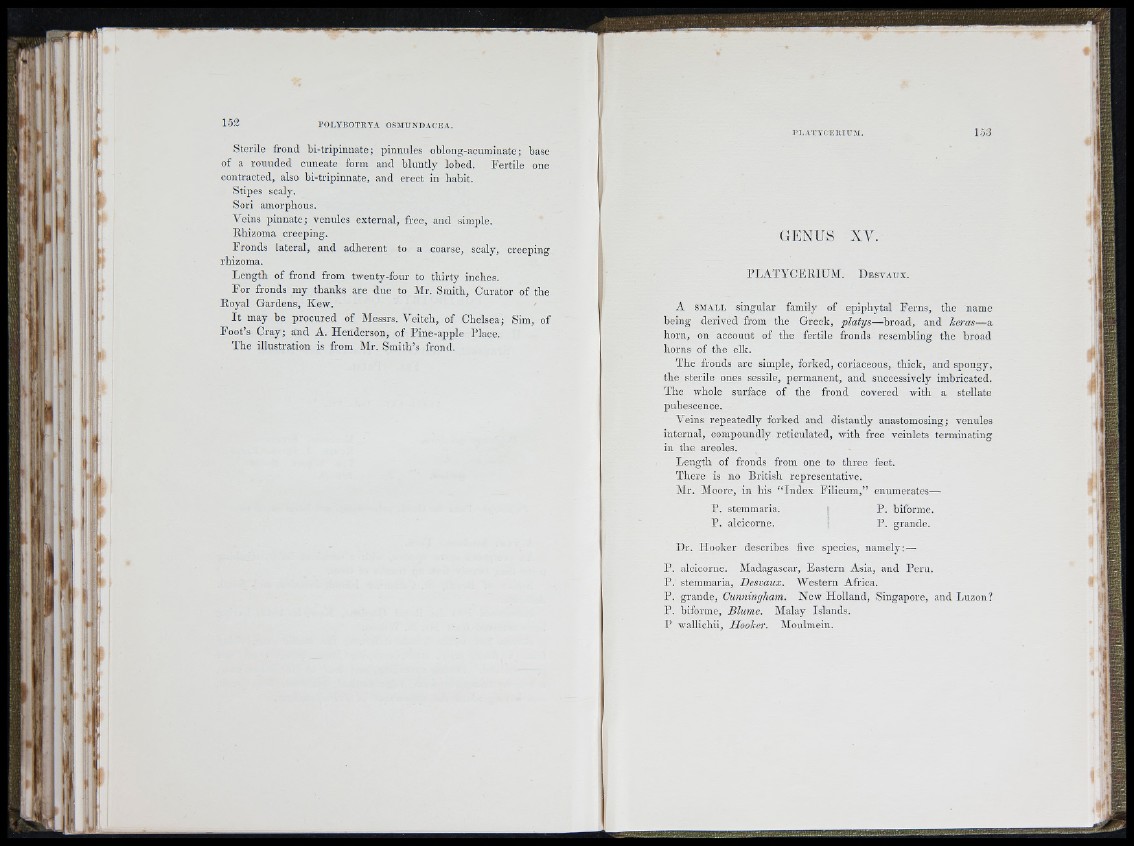
152 P O L Y B O T R Y A O SM U N D A C E A .
Sterile frond b i-tripinnate; pinnules oblong-acuminate; base
of a rounded cuneate form and b lu n tly lobed. F e rtile one
contracted, also bi-tripinnate, and erect in habit.
Stipes scaly.
Sori amorphous.
A^cins p innate; venules e.xternal, free, and simple.
Rhizoma creeping.
Fronds lateral, and adherent to a coarse, scaly, creeping
rhizoma.
L ength of frond from twenty-four to th irty inches.
Lor fronds my thanks are due to Mr. Smith, Curator of the
Royal Gardens, Kew.
I t may be procured of Alessrs. AYitch, of Chelsea; Sim, of
L oot’s Cray; and A. Henderson, of Pine-apple Place.
T he illustration is from Air. Smith’s frond.
p i .a t y c e r i u .m .
GENUS XV.
PLA TY C E R IU A I. D e s v a u x .
A SM A L L singular family of epiphytal F erns, the name
being derived from the Greek, p la ty s—-broad, and heras-—a
h orn, on account of the fertile fronds resembling the broad
horns of the elk.
The fronds are simple, forked, coriaceous, thick, and spongy,
the sterile ones sessile, permanent, and successively imbricated.
The whole surface of the frond covered with a stellate
pubescence.
Veins repeatedly forked and distantly anastomosing; venules
internal, compoundly reticulated, with free veinlets terminating
in the areoles.
L en g th of fronds from one to three feet.
T h e re is no British representative.
Air. Aloore, in his “ In d ex Filicum ,” enumerates'—■
P. stemmaria. [ P . hifonne.
P. alcicornc. | P . grande.
Dr. Hooker describes five species, namely: —
P . alcicorne. Aladagascar, E astern Asia, and Peru .
P. stemmaria, Desvaux. AYestern Africa.
P . grande, Cunningham. New Holland, Singapore, and Luzon?
P. biforme, Blume. Alalay Islands.
1’ wallichii, Ilooher. Alouhnein.